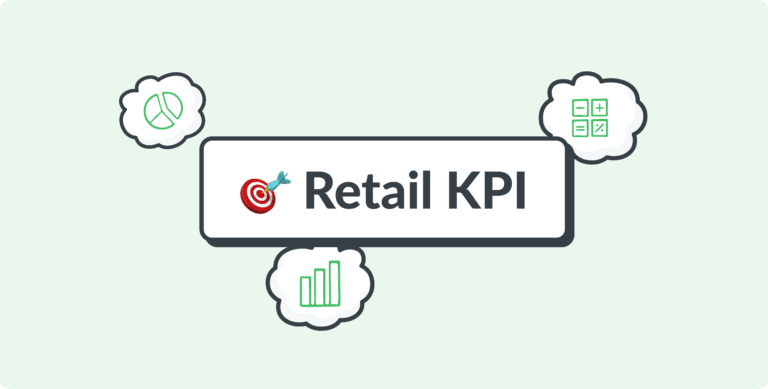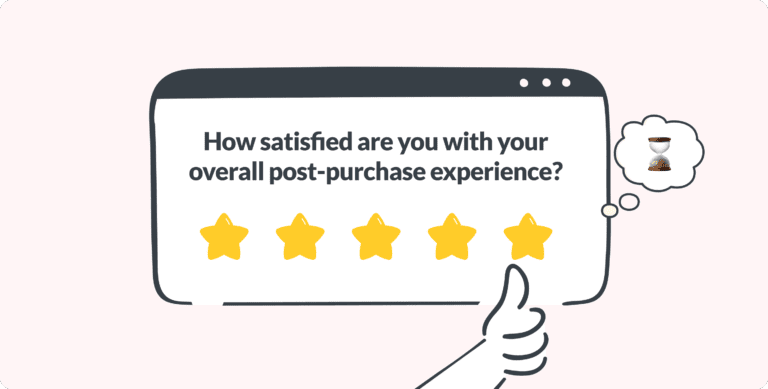For retailers, understanding consumer behavior is crucial for crafting effective strategies that drive sales and improve customer loyalty. But this isn’t a straightforward challenge.
Customers have multifaceted needs and expectations that shift rapidly, influenced by emerging trends and shifting market conditions. To stay ahead, retailers must continuously analyze consumer data — and adjust their approaches accordingly.
What is consumer behavior?
Consumer behavior is the study of how individuals and groups select, use, and dispose of products and services.
That means analyzing the motivations and decision-making processes behind customers’ choices.
Understanding consumer behavior is essential for retailers. It allows you to anticipate customer needs, tailor your marketing strategies, and deliver experiences that drive both brand loyalty and customer satisfaction.
Several factors shape customer behavior, including:
- Psychological factors — Emotions, perceptions, and cognitive biases influence your shoppers’ decisions; these factors can change from moment to moment. If your customer’s having a good day, they may be more inclined to explore new products or make an impulse purchase. On the other hand, a stressful day might lead them to seek familiarity, comfort, and convenience.
- Social factors — Family, peers, and social networks affect purchasing habits in a more long-term way. Human behavior is deeply influenced by a sense of belonging. Whether it’s family traditions or the latest online trends, people look to their social circles for cues on what to buy.
- Economic factors — Unsurprisingly, income levels and perceived product value dictate spending habits to a large degree. Economic factors determine whether your customer prioritizes affordability, quality, or exclusivity when making a purchase.
- Personal factors — Age groups, lifestyle choices, and preferences shape purchase behavior too. What appeals to a younger, tech-savvy audience may not resonate with an older demographic looking for reliability and simplicity.
Retailers who analyze these factors can develop effective data-driven approaches that align with customer expectations and enhance brand loyalty. They can craft strategies that anticipate and respond to shifting consumer trends.
It’s important to understand that consumer behavior doesn’t just dictate what people buy—it also predicts how they interact with your brand when things go wrong. Addressing pain points effectively can turn a frustrated buyer into a loyal customer, as it reinforces trust and long-term engagement.
The role of data analytics in understanding & predicting consumer behavior
Retail businesses rely on data analytics to track and predict consumer trends, ensuring they meet evolving customer needs.
With the rise of social media, consumer psychology has become even more dynamic, requiring your team to adapt quickly to shifting preferences.
Here’s how data analytics drives smarter retail decisions:
🎨 Personalization — Embrace personalized, data-driven marketing strategies and create highly tailored shopping experiences. For example, you could offer custom promotions based on past purchases and browsing history, or reward repeat customers with exclusive discounts.
🔮 Predictive analytics — Analyzing consumer trends allows you to forecast demand. Stock the right products at the right time, and keep your offerings aligned with shifting market preferences.
📊 Segmentation analysis — Use market segmentation to divide customers into target audiences based on demographics, behavior, preferences, etc. The more refined your understanding of your consumer base, the more precise and effective your strategies become.
🏆 Product optimization — Track consumer behavior in order to refine your product offerings. Understand what sells (and what doesn’t), and align inventory with demand. This ensures your customers always find what they’re looking for.
💬 Customer service insights — Data analytics helps identify pain points in the shopping experience. Whether through surveys, feedback, or sentiment analysis, tracking customer satisfaction metrics allows you to proactively address issues and improve service.
By harnessing data analytics, you can create seamless, personalized experiences that keep you customers engaged, satisfied, and loyal. The question isn’t whether to use data-driven insights, but how fast you can act on them.
Read more: Use customer insights to achieve excellence
Customer satisfaction metrics — your key to retention
By using surveys to measure customer experience, you eliminate guesswork and gain clarity about your customers’s priorities and habits. The right customer satisfaction metrics tell you what’s working and where you’re losing customers.
Here’s what you should be tracking:
- Net Promoter Score (NPS) — How likely are your customers to recommend you? If they won’t, why?
- Customer Satisfaction Score (CSAT) — Measuring customer satisfaction isn’t optional—it’s the foundation of your success. Ask: “How satisfied are you with your experience?”
- Customer Effort Score (CES) — How easy is it to shop with you? The harder it is, the fewer customers return.
- Repeat purchase rate — If they’re not coming back, something’s wrong.
- Social media sentiment — What are customers saying about you online? Love? Frustration? Indifference?
These metrics predict loyalty and tell you what your buyers care about the most. If you’re not tracking them, you’re missing out on valuable insights that could help your business thrive.
Read more: How to improve the quality of the feedback you’re receiving
Market segmentation and target audience analysis
Market segmentation divides customers into groups based on specific characteristics such as:
- Demographic traits including age groups, income levels, gender
- Behavioral patterns like shopping frequency, brand preferences, and product usage
- Geographic location
- Psychographics such as values and lifestyle
By segmenting the market, your team can design more effective marketing strategies and improve the customer journey for each segment. Understanding different target audiences allows you to improve the surveys you send out; this lays the foundation for more personalized and insightful communication.
The impact of social media on consumer behavior
It’s not surprising that social media plays a massive role in influencing buying habits. Buyers rely on reviews, influencer recommendations, and peer opinions before making a purchase. By maintaining an active presence on social media, retailers can strengthen their relationship with customers and increase brand loyalty.
Some key ways social media affects your target audience:
- Influencer marketing — Shoppers trust influencers who endorse products, making it a powerful marketing tool.
- User-generated content — Reviews, testimonials, and shared experiences build trust and credibility.
- Social proof — Seeing others endorse a brand or product can drive consumer trends.
- Customer feedback — Social media allows you to address concerns and improve customer satisfaction in real time.
💡 Customer feedback isn’t just about fixing problems—it’s a goldmine for finding and amplifying happy customers. Reach out, thank them, and ask for reviews or social media shoutouts. A genuine testimonial or shared post builds trust faster than any ad. Turn satisfied shoppers into vocal advocates, and let their endorsements drive brand loyalty and visibility.
Your customers are telling you what they want—are you listening?
Consumer behavior isn’t a mystery; it’s a constant conversation. Every click, review, abandoned cart, and repeat purchase is a clue. The real question isn’t whether customers are showing you what they need — it’s whether you’re paying attention.
Retailers who embrace data-driven marketing, anticipate consumer trends, and adapt to shifting buying behaviors will thrive. Those who don’t can only watch their customers walk straight into the arms of competitors.
Success in retail doesn’t come from guesswork. It’s about listening, adapting, and delivering what your customers already crave. Are you ready to meet them where they are?
About Simplesat: Simplesat is the leading omnichannel survey app designed to enhance customer feedback management across various platforms, including Zendesk, Salesforce, and Gladly. Trusted by businesses worldwide, Simplesat delivers actionable insights that drive business growth and customer satisfaction.















